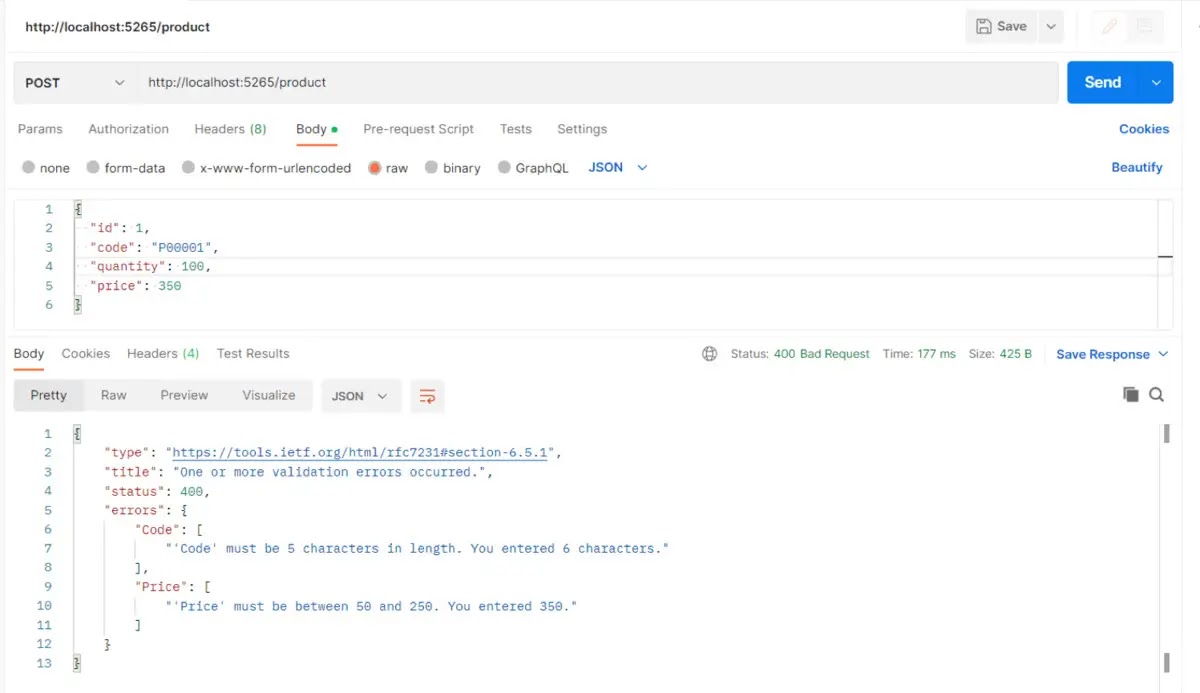Utilize model approval in negligible APIs in ASP.NET Code 6
Exploit FluentValidation to approve your model classes while working with
negligible APIs in ASP.NET Code 6.
While working with applications in ASP.NET Code 6 you will frequently need to
approve your models to guarantee that the information they contain adjusts to
the pre-characterized approval rules. Enter model approval.
We've examined how we can begin with negligible APIs in a prior article. This
article talks about how to involve model approval in negligible APIs.
To work with the code models given in this article, you ought to have Visual
Studio 2022 introduced in your framework. On the off chance that you don't as
of now have a duplicate, you can download Visual Studio 2022 here.
Make an ASP.NET Code negligible Web Programming interface project in Visual
Studio 2022
Most importantly, we should make an ASP.NET Code task in Visual Studio 2022.
Following these means will make another ASP.NET Code Web Programming interface
6 undertaking in Visual Studio 2022:
- Launch the Visual Studio 2022 IDE.
- Click on “Create a new project.”
- In the “Create new project” window, select “ASP.NET Core Web API” from the list of templates displayed.
- Click Next.
- In the “Configure your new project” window, specify the name and location for the new project.
- Optionally check the “Place solution and project in the same directory” check box, depending on your preferences.
- Click Next.
- In the “Additional Information” window shown next, uncheck the checkbox that says “Use controllers…” since we’ll be using minimal APIs in this example. Leave the “Authentication Type” as “None” (default).
- Ensure that the check boxes “Enable Docker,” “Configure for HTTPS,” and “Enable Open API Support” are unchecked as we won’t be using any of those features here.
- Click Create.
This will make another ASP.NET Code 6 Web Programming interface project in
Visual Studio 2022. We'll involve this venture to work with model approval in
the resulting areas of this article.
What is model approval? For what reason is it required?
Model approval is a procedure used to approve code state, i.e., to decide
whether the information in the model adjusts to the characterized rules. Allow
us to figure out this with a model. Expect you have a model class named Item,
in which one of the fields is the Item Code.
Presently guess you have characterized a trait in the Item class by which the
Item Code property can't have a worth that is longer than five characters. In
the event that you make a case of this model class and allot in excess of five
characters to the Item Code property, then, at that point, model approval for
this article will fall flat.
There is no underlying help for model approval in negligible APIs (not at all
like in ASP.NET code MVC and Razor Pages). Subsequently, you should compose
your own custom code to approve the models in your negligible Programming
interface applications.
Introduce the FluentValidation.AspNetCore NuGet bundle
In this article, we'll utilize the FluentValidation approval library, which is
accessible as a NuGet bundle. FluentValidation utilizes a familiar Programming
interface and lambda articulations to make information approval rules.
Presently add the FluentValidation.AspNetCore NuGet bundle to your task. To do
this, select the venture in the Arrangement Pilgrim window, then right-click
and select "Oversee NuGet Bundles." In the NuGet Bundle Administrator window,
look for FluentValidation.AspNetCore bundles and introduce it.
On the other hand, you can introduce the bundle through the NuGet Bundle
Administrator console by entering the order displayed underneath.
Make the model class
Make another class named Item in a record with a similar name and a .cs
expansion, and enter the accompanying code in there.
This will act as the model class we will use for approval.
Make the ProductValidator class
Presently guess the Item class requires a validator, i.e., a class that will
approve the properties of the Item class. You can make a custom validator by
expanding the theoretical class named AbstractValidator as displayed in the
code bit given beneath.
Make the IProductRepository interface
A vault is utilized in an application to persevere information to an
information store like a data set or a document framework. In this model, we
will make a basic store that has a technique named AddProduct, yet since we're
zeroing in on model approval here, we wo exclude the rationale to add an item
record to the data set.
Make a connection point named IProductRepository and enter the accompanying
code.
Make the ProductRepository class
The ProductRepository class carries out the IProductRepository interface as
displayed underneath.
Register the validator and store classes in Program.cs
Register the ProductValidator and ProductRepository types in the Program.cs
document utilizing the accompanying code.
Make a HttpPost endpoint in Program.cs
Presently compose the accompanying code in the Program.cs record to make a
HttpPost endpoint.
Note how the boundaries validator, store, and item have been passed. The
ValidateAsync strategy is called to approve the item occurrence.
Complete model approval model
The total source code of the Program.cs record is given underneath for your
reference.
Execute the application
In conclusion, how about we execute the application and summon the HttpPost
endpoint from Mailman to see model approval in real life. Figure 1 shows the
result upon approval of the model. Note the mistake messages in the reaction.
Figure 1: Model approval in a negligible Programming interface in ASP.NET code
6 utilizing the FluentValidation library.
You can likewise apply custom validators utilizing the IValidatableObject
interface. This connection point contains a technique named Approve, which you
would have to carry out yourself. To do as such, you would make a model class
that executes this connection point and the Approve technique. I'll examine
the utilization of IValidatableObject in a future post here.






No comments:
Post a Comment